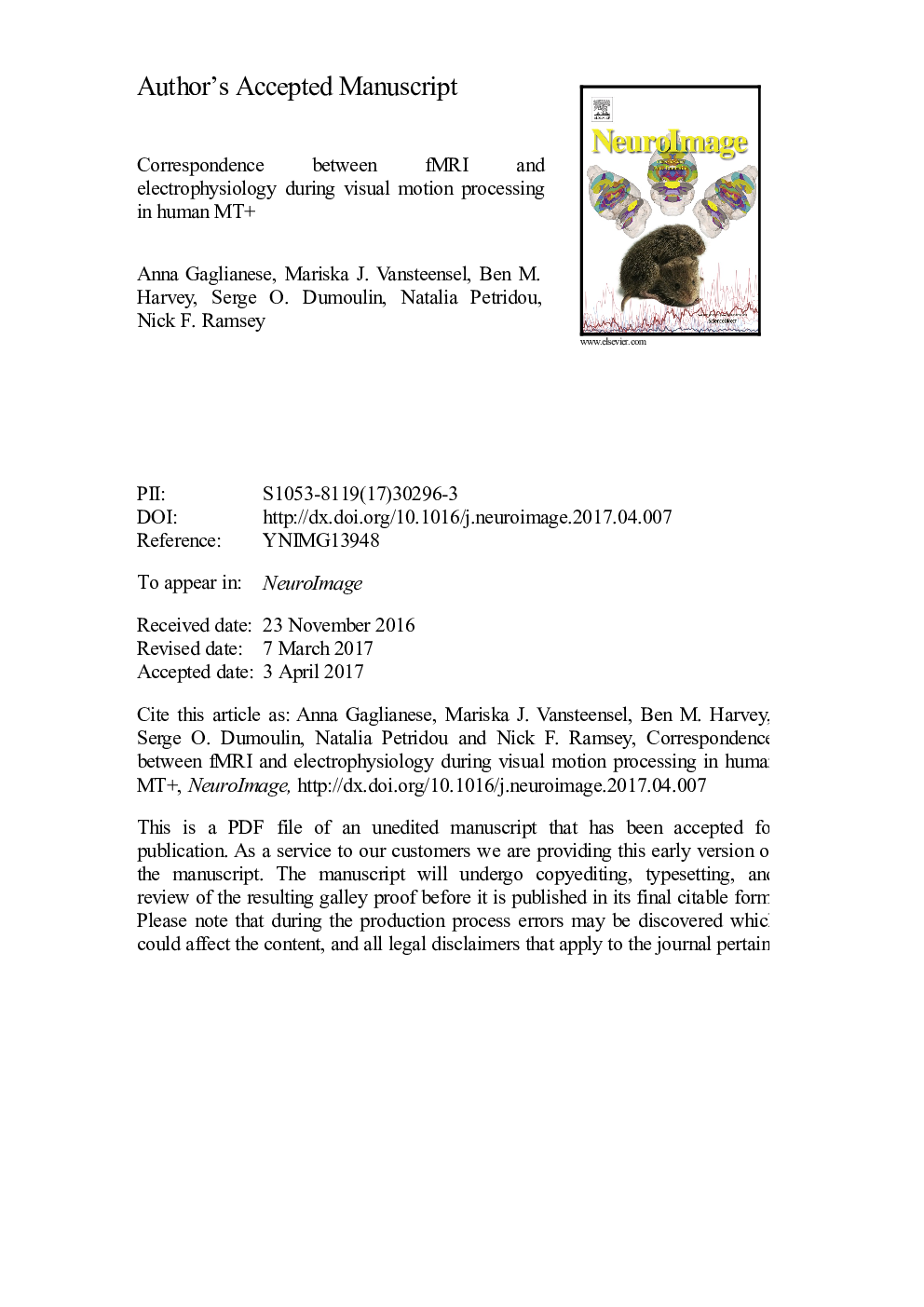| Article ID | Journal | Published Year | Pages | File Type |
|---|---|---|---|---|
| 5631155 | NeuroImage | 2017 | 31 Pages |
Abstract
Changes in brain neuronal activity are reflected by hemodynamic responses mapped through Blood Oxygenation Level Dependent (BOLD) functional magnetic resonance imaging (fMRI), a primary tool to measure brain functioning non-invasively. However, the exact relationship between hemodynamics and neuronal function is still a matter of debate. Here, we combine 3Â T BOLD fMRI and High Frequency Band (HFB) electrocorticography (ECoG) signals to investigate the relationship between neuronal activity and hemodynamic responses in the human Middle Temporal complex (hMT+), a higher order brain area involved in visual motion processing. We modulated the ECoG HFB and fMRI BOLD responses with a visual stimulus moving at different temporal frequencies, and compared measured BOLD responses to estimated BOLD responses that were predicted from the temporal profile of the HFB power change. We show that BOLD responses under an electrode over hMT+ can be well predicted not only be the strength of the neuronal response but also by the temporal profile of the HFB responses recorded by this electrode. Our results point to a linear relationship between BOLD and neuronal activity in hMT+, extending previous findings on primary cortex to higher order cortex.
Keywords
Related Topics
Life Sciences
Neuroscience
Cognitive Neuroscience
Authors
Anna Gaglianese, Mariska J. Vansteensel, Ben M. Harvey, Serge O. Dumoulin, Natalia Petridou, Nick F. Ramsey,
